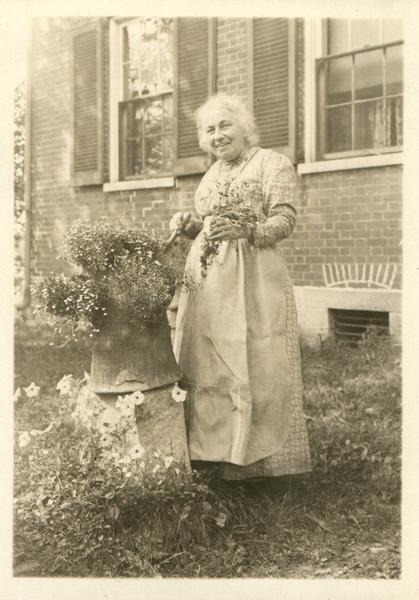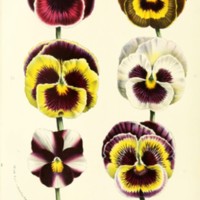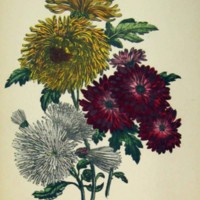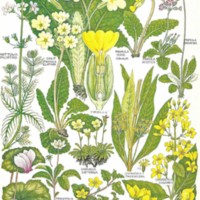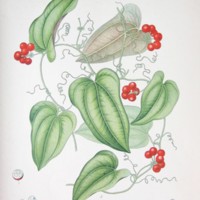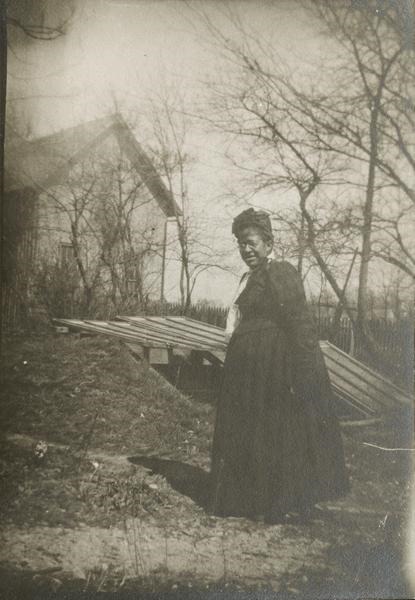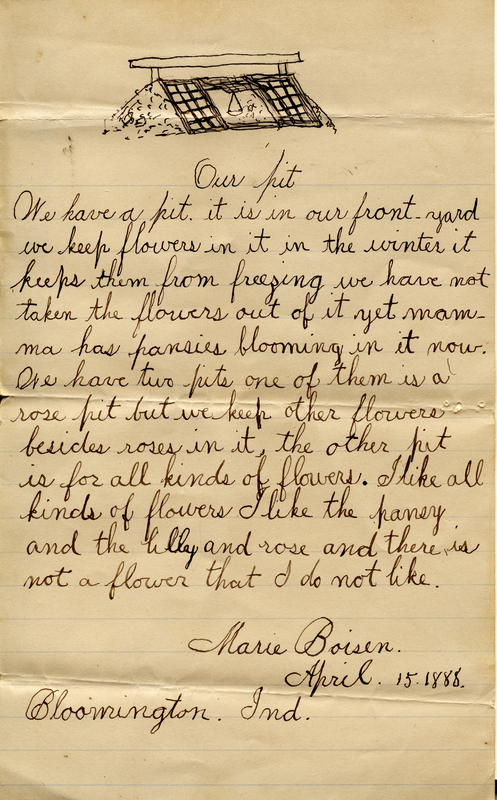Wylie Family Gardening
The Wylie Family was very interested in beautifying their home, which we can tell from first-person sources such as hand-written letters, a essay written by Louisa Wylie Boisen, as well as historic photographs. The majority of the letters were written by Louisa Wylie or Emma Dennis. Louisa Wylie is the daughter of Theophils and Rebecca Wylie while Emma Dennis is her aunt. These letters document some types of flowers the Wylie family grew on their property, as well as other plants they were working with.
The following is a list of flowers and decorative plants that the Wylie family grew that has been compiled based on the family letters.
- Arundo
- Aster
- Azelea
- Canna
- Chrysanthemums
- Clematis
- Double Datura
- Fountain Plant
- Fuchsia marginata
- Geranium (double pink)
- Lycopodium
- Nolana
- Oleander
- Pansies
- Phlox
- Plumbago
- Primrose
- Quince (Japanese)
- Roses (Niphitos, Cornelia Cook, Perle de Jardin, American Banner)
- Scarlet Sage
- Smilax
- Tuberose
- Verbenas
- Wisteria
Not only did the family write about their flowers, they also wrote about a type of pit they constructed in their yard for flowers. Throughout the letters it was referred to as a few different names; "the rose pit", "the pit", "cold frame", etc. The first mention of a "pit" was in a letter marked January 13, 1873 written by Rebecca Wylie. In this letter she just mentioned moving some flowers from the cellar and into the pit. The next mention of the pit was not until October of 1874 in a letter written by Emma Dennis to Louisa Wylie.
Here are some letter excerpts mentioning the pits:
"... The rose pit is finished and is larger than I expected. It has a shelf which will answer nicely I think for verbenas or forseeds in the spring. I took up all your plants on Saturday between the showers but two roses and will attend to them soon. The Prof’s hanging basket is still looking well."
Emma Dennis to Louisa Wylie, October 1, 1884.
This pit was not limited to roses as it may seem at first - the Wylie stored many different types of flowers inside of the underground structure especially in inclemant weather.
"... Friday night it suddenly turned very cold, 8 below zero. Many persons lost their flowers. We were almost afraid to look into the pit, but today was so very warm we opened it and found all right. I have moved up in your room and like it so much better but it takes more time as I have quite a number of flowers there and they take attention. The Daphne Indica is in bloom and the Cape Jessamine the Prof gave me is in bud. The white Primrose is in flower but the red one looks badly, has drooped ever since I brought it from the pit."
Rebecca Wylie to Louisa Wylie, December 1, 1874.
"It was intensely cold here and it remained cold so long, your mother lost quite a number of her flowers. But many that she thought had gone are coming out from the roots. Your two large geraniums on the large table were not injured. The smilax slightly touched, the ivy geranium ditto. The primroses she had put on the bureau and all the leaves were frozen but the flower stalks were not hurt and she gathered quite a number of flowers from them for Mrs. Cookerly. That and smilax was all she could send as it was impossible to open the pit. ...But the greatest destruction in the pit is among the little pots. "
Emma Dennis to Louisa Wylie Boisen, Feburary 2, 1875.
Other than the family letters, there are other sources that tell about how the Wylie's were gardening or using floriculture in their lives. One such source is an essay written by Louisa Wylie Boisen from February 1890 about gardening. Here is an excerpt from that essay,
"The seeds of greenhouse plants I would not plant in the garden at all. The plants raised in the house will give us earlier blossoms, for we can seldom plant seeds in the ground before the first of May. There are some seeds though which do not bear transplanting well and fortunately they can be planted in the open ground as soon as it can be worked; this is the case with Larkspur, Candytuft, Poppies and others. Sweet Peas always do better if planted as soon as possible and will thrive best if planted from four to six inches deep in rich soil. The flowers of the pansies planted in the Fall are the largest and finest. The seed may be planted out doors but I prefer to plant in boxes and keep in a pit or Cold frame."
Another source is a short essay written by young Marie Boise, the daughter of Louisa Wylie Boisen.


